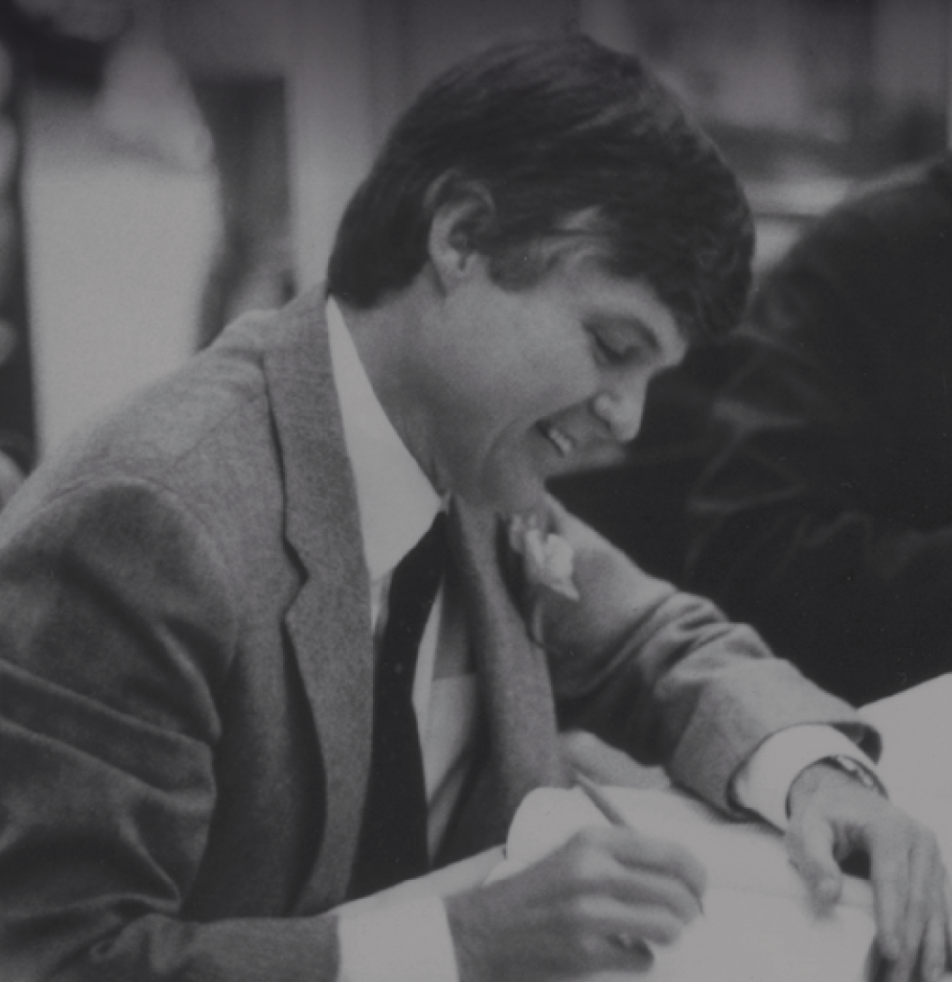Preservation Battle Book Revived for its Unique “Vieux”
January 16, 2020 | Brad Vogel, Executive Director
“We all know that eternal vigilance is the price we must all pay for democracy. We have also learned that is also the price we must pay if we desire to protect and preserve the quaint and distinctive character of this city that we all love.”
Who said it? Was it Jane Jacobs thinking of the Village in the wake of the harrowing Lower Manhattan Expressway fight? Albert Bard or George McAneny as the dust settled following years of preservation warfare to save Castle Clinton and The Battery from Robert Moses and the ramps of his proposed highway bridge?
A clue: it was, in fact, spoken by a preservationist who fought a destructive proposed highway. But the quote did not issue from a New Yorker’s mouth. It encapsulated a fight with stakes just as high, however. So whose quote is it?
Bill Borah of New Orleans. The late, legendary preservationist made the observation as he summed up the lessons of the preservation battle that saved that city’s French Quarter from a gigantic elevated expressway—originally proposed in 1946 by Robert Moses. It would have run across the front of New Orleans’ famed Jackson Square; the knock-down-drag-out fight to stop it came to be known as “The Second Battle of New Orleans” (the first having been won by the Square’s namesake in an effort to stave off the British in the War of 1812). It also came to be the title of a 1980 book written by Borah and his compatriot Dick Baumbach recounting the long-running civic conflict—a book that is being re-released by the University of Louisiana at Lafayette Press in late 2019.

The book is a unique creation; the outline and section headings may seem dry, but it is the blow-by-blow account found in the marrow that makes it worthwhile reading. It is a fascinating read for anyone who finds themselves tractor beamed directly toward any planning, preservation, or history book that comes within arm’s reach. And as journalist Jed Horne’s lively new foreword for the forthcoming edition points out: “Jane Jacobs’ famous book The Death and Life of Great American Cities would inspire resistance across America to the kinds of disasters Moses and his ilk continued striving to implement. Borah’s and Baumbach’s wisdom is assembled in this volume, which deserves equally wide readership.”
The urbanist and author Roberta Brandes Gratz also tells Horne, in the draft foreword, that Borah is the Jane Jacobs of New Orleans. He never gained—and never really wanted—as high a profile, but “his role in saving New Orleans was every bit as pivotal as hers in saving Greenwich Village and lower Manhattan.”
Borah and Baumbach also took the time, it must be noted, to write the account of the preservation fight. In doing so, they provided a valuable resource and tool for preservationists to come, and they shaped preservation history itself.
The book may surprise a reader because it provides a rather comprehensive and unexpectedly objective telling of the overall tale, marching through Chamber of Commerce, government agency, and neighborhood activists’ machinations across the 1960s. Borah and Baumbach attempt to provide the full tableau and let the facts speak for themselves rather than making the book a spirited, personalized account of their own heroics, though the facts provide quite a dramatic account of a heated fight over a microphone in front of the Secretary of Transportation in Washington, D.C. as the fate of the Vieux Carre (“old quarter”) hangs in the balance.
The book also captures an interesting moment in time, as the federal Department of Transportation was first established near the climax of the highway fight in New Orleans. The National Historic Preservation Act, too, materializes on the scene in the midst of the fight, and that law’s Section 106 mechanism is quickly taken up by preservation advocates as an arrow in the quiver.
But through all of Borah and Baumbach’s narrative, the lessons for preservationists shine through strongest: persistence in the face of overwhelming odds (business interests, government, the press), resourcefulness, skepticism, casting a broad net for allies, and delineating the values at stake.
I had a chance to get to know Bill Borah well during in my time in New Orleans, as we fought side by side to prevent the mass demolition of nearly 70 acres of historic neighborhood in a National Register district post-Katrina. His vigor and spirit inspired me, and he knew how to lace the tough times with a cup of turtle soup at Mandina’s or a cocktail on his balcony just across the street from the French Quarter.
He was also adamant that preservationists needed to record and heed the history of earlier preservation efforts. As he told me in an interview in 2011:
“I got involved in the Riverfront Expressway controversy back in the ‘60s. We were trying to stop the interstate highway going through the French Quarter. We were successful. But in terms of decision-making and the ad hoc, dysfunctional system that I grew up with…it continues to this day. And all the hopes and dreams we had after Katrina…there were some things done that were positive…but the city and state, looks like it’s reverting to the way it was before Katrina.”
The re-release of The Second Battle of New Orleans this year is a welcome—and necessary—step toward ensuring that preservationists everywhere have a full accounting of one of the nation’s most tenacious, enduring preservation battles. New Orleans preservationist Sandra Stokes has played a significant role in ensuring that the release occurs following Borah’s death in 2017.
When spirits flag and the right outcome seems impossible, I still, to this day, picture Bill Borah, recall his indefatigable smile, and think of the events set out in his book. We are never doomed to repeat the mistakes of the past.


